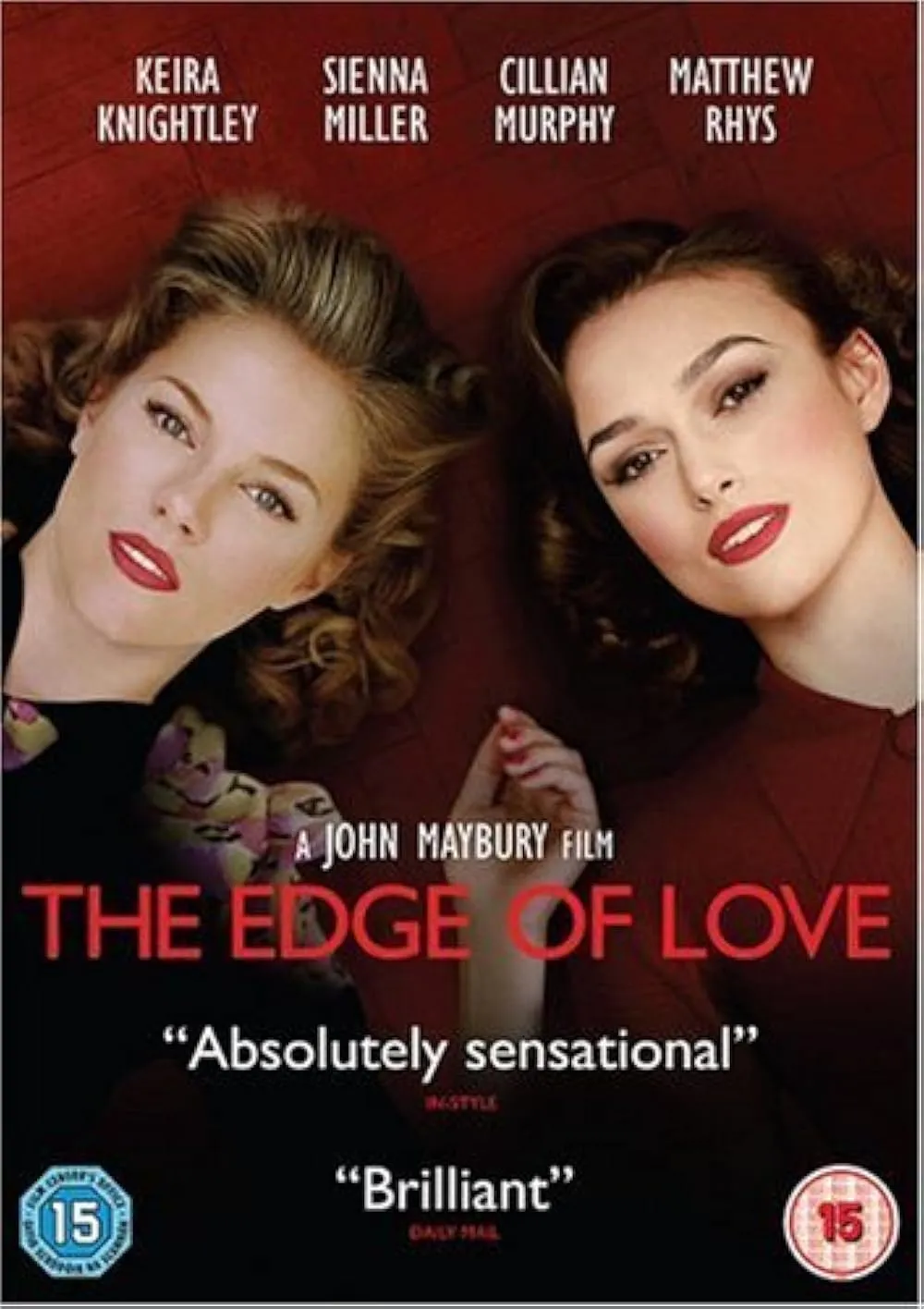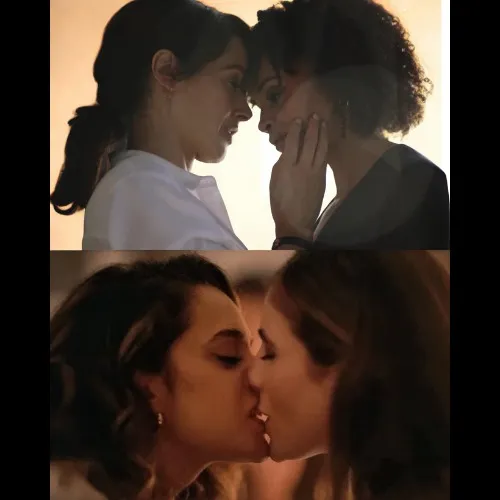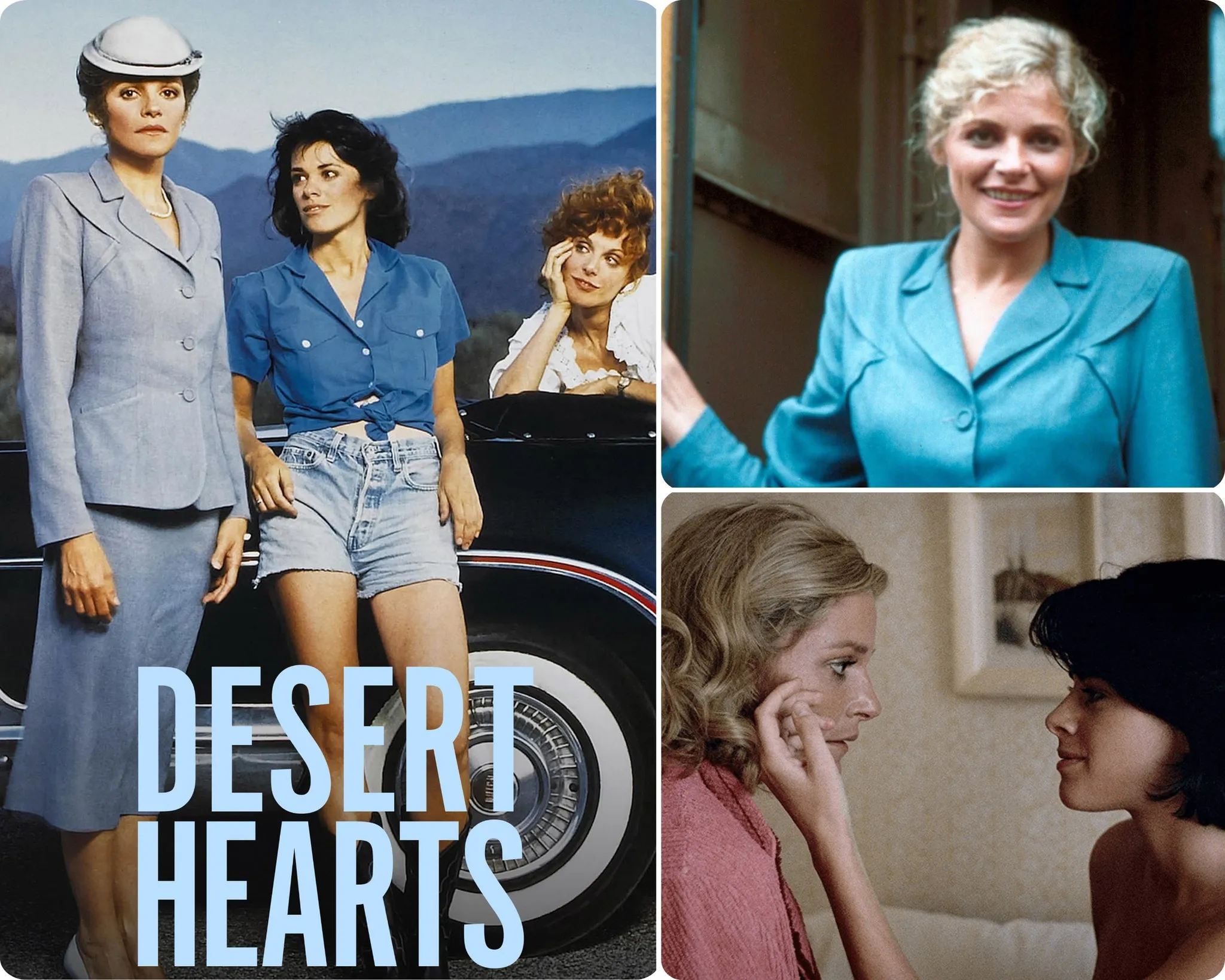The Edge of Love (2008)
Set against the haunting backdrop of World War II, The Edge of Love is a poignant and atmospheric drama that explores the tangled emotional lives of four central characters: the poet Dylan Thomas, his wife Caitlin Macnamara, his childhood friend and former lover Vera Phillips, and Vera’s eventual husband, soldier William Killick. The film begins in London, where Vera, a nightclub singer living amidst the chaos of nightly bombings, unexpectedly reconnects with Dylan. Their reunion is charged with a bittersweet intensity, a mix of lingering affection and the painful realization that time and circumstances have changed them. Despite the passionate undercurrents of their past, Dylan is now married to Caitlin, a fiercely independent and emotionally volatile woman who makes no attempt to hide her possessiveness over her husband or her unpredictability. However, instead of a rivalry, what forms between Caitlin and Vera is an unlikely but profound friendship—one that defies traditional notions of loyalty and love. The early part of the film captures this emotional web with a sense of nostalgia and fragility. Dylan, charismatic and careless, floats between the two women, basking in their attention without fully committing to either. His poetry and charm are intoxicating, but they also mask a deep selfishness and emotional immaturity. Vera, while drawn to Dylan’s creative energy, begins to see the dangers of falling back into a love that never brought her peace. Caitlin, though bold and vivacious, reveals moments of deep vulnerability, particularly in her dependence on Dylan, whose bohemian lifestyle often leaves her feeling abandoned. The three form a strange kind of domestic arrangement, living and laughing together in the countryside, away from the bombs of London, as the war looms ever closer. It is here that the line between friendship, love, and need begins to blur, and the film delves into the complexities of human connection during times of uncertainty and fear.

The dynamic shifts dramatically when William Killick, a quiet but intense soldier, enters Vera’s life. His love for her is sincere and unwavering, offering her a sense of stability and protection that she desperately needs. Despite her lingering feelings for Dylan, Vera agrees to marry William, and their union marks a significant turning point in the story. The war soon calls William away, leaving Vera pregnant and emotionally conflicted. During his absence, her friendship with Caitlin deepens, becoming almost sisterly in its closeness. The two women, both mothers now, support one another through long days and sleepless nights, forming a bond that feels more intimate and loyal than either of their relationships with Dylan. And yet, Dylan remains a central figure, his presence disruptive and magnetic. He shares an intense emotional intimacy with Vera that borders on the romantic, even as he continues his tumultuous marriage with Caitlin. These emotional entanglements are portrayed with subtlety and nuance, emphasizing the psychological toll of war and the complicated ways people seek comfort and meaning in one another. When William returns from the front, he is no longer the man who left. Traumatized and hardened by the violence he has witnessed, he finds himself estranged from the world he once knew. Suspicion and jealousy begin to consume him as he notices the lingering emotional connection between Vera and Dylan. His resentment grows, particularly towards Dylan, who seems to live freely and irresponsibly while others suffer for their choices. This tension culminates in a shocking act of violence: William storms into Dylan and Caitlin’s cottage with a gun, driven by a sense of betrayal and emotional disorientation. Although no one is physically harmed, the event shatters the fragile peace between the characters and leads to a public trial that exposes the depths of their dysfunction. Vera is forced to confront the consequences of her emotional indecision, and Caitlin must acknowledge her role in enabling Dylan’s reckless behavior. The court scene, while brief, serves as a symbolic reckoning for all four characters, revealing the emotional damage inflicted not only by war, but by their own choices and desires.

In the end, The Edge of Love does not offer easy resolutions or tidy conclusions. Relationships remain strained, and forgiveness is not guaranteed. The war ends, but its impact lingers in the haunted eyes of the characters. Vera and William attempt to rebuild their lives, but the trust between them has been deeply wounded. Dylan continues to write, his art forever intertwined with the chaos of his personal life. Caitlin, both fierce and fragile, remains tethered to a love that both empowers and destroys her. The film closes on a quiet, melancholic note, suggesting that love—especially love touched by memory, loss, and longing—does not end cleanly. It leaves traces, echoes, and scars. Visually and emotionally rich, The Edge of Love captures the complexity of human relationships during a time when the world itself was on edge. With its muted color palette, lyrical cinematography, and evocative score by Angelo Badalamenti, the film creates a world where emotions are as explosive as the bombs falling from the sky. The performances—especially by Keira Knightley as Vera and Sienna Miller as Caitlin—bring depth and vulnerability to the story, portraying two women navigating love, identity, and friendship in a time of war. Cillian Murphy’s William adds a quiet intensity, while Matthew Rhys’s Dylan embodies the tragic allure of the tortured artist. Ultimately, The Edge of Love is less about a traditional love story and more about the blurred boundaries between affection, desire, and need. It is a meditation on the emotional costs of war—not just on soldiers, but on those left behind, whose lives unravel in quieter, but no less devastating ways. The title speaks to this delicate balance, the “edge” where love becomes obsession, friendship turns to rivalry, and longing gives way to regret. In this beautifully tragic world, love is never simple, but always deeply human.




